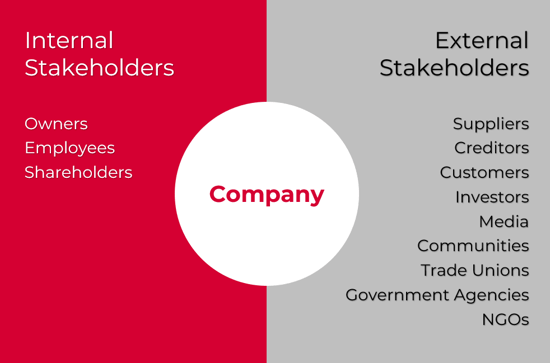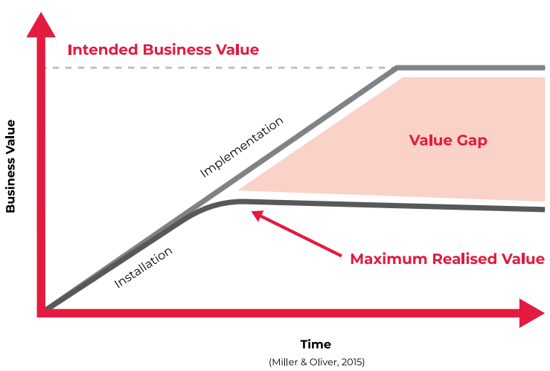Who are stakeholders and why are stakeholders important to your business?
How engaging them can help you reach your business goals?
Perhaps you have a project that is failing to get off the ground or is meeting resistance. Or you may be interested in knowing how harnessing the opinions of your stakeholders could benefit your reputation and success.
In this blog post, you'll gain a clear view of why stakeholders should matter to your organisation. Keep reading or click on a specific topic:
- What are stakeholders?
- Why are stakeholders important to a business?
- What are the benefits of engaging stakeholders?
- Why is it important to understand the issues that matter to stakeholders?
- Managing stakeholder conflicts
- Lack of stakeholder management consequences
- Effectively manage stakeholders
What are stakeholders?
A stakeholder is either an individual, group or organisation who is impacted by the outcome of your organisation or project's actions.
They can have a positive or negative influence, as well as an interest in the success of the project and can be within or outside the organisation.
Stakeholder types
Every organisation has a full complement of stakeholders: from employees, suppliers and partners, who create products and services; to customers, who must be satisfied; to society and the environment; and to investors, who are paid out of profits. As your business grows, your work will affect more people.
There are two types of stakeholders: internal and external.
Internal stakeholders are those who are employed by the company, such as employees and managers. External stakeholders are not employed by the company but have a vested interest in its success or failure. This can include customers, suppliers, shareholders, and the local community.
Here are the most common types of internal and external stakeholders:

Stakeholder levels of influence and interest
We've already identified that stakeholders can be in a range of positions, internal and external and with varying degrees of closeness to the business.
But what can also vary are their interest and influence levels over your project.
Stakeholder types and levels of influence and interest examples:
- Direct manager/supervisor: high levels of power and interest
Your project manager likely has the power to greenlight or shut down your project.
- Shareholders/investors: high power and medium interest
Shareholders and investors usually hold a stake in multiple entities. diluting their unique interest in your project.
- Government: high power, probably low interest
The government controls the laws and regulations that could shut down your business or project. Because government entities monitor everything and everyone, their interest in your individual business is likely to be low.
- Senior executives: high power, low interest
Your company's seniors have strong influence but limited bandwidth to focus on the outcomes of a single activity or project.
- Co-workers: medium power and interest
Co-workers carry a range of influence, but mostly their influence will be in their ability to leverage additional resources, including the support of other co-workers and your superiors.
- Community groups: medium power and interest
Communities could sway your plans. If you need to build a new premise or make partnerships in their area, how much could they impact your project? It's important to update them and get their buy-in.
Stakeholder allegiance
Stakeholder groups can be narrowed down even further. Some of your stakeholders will be advocates, others will be indifferent or detractors.
- The passive-aggressive stakeholder may say they are in support of the activity, yet object or create obstacles to derail or delay it at every opportunity.
- The antagonist or intimidator may initiate arguments with other stakeholders or subtly or overtly put down their contributions. creating an environment of animosity.
- The saboteur can manipulate other stakeholders.
- The victim of circumstance may look to blame others for unsuccessful outcomes.
As you can see, there is a vast range of complex individuals you have to acknowledge.
Using the stakeholder mapping technique will enable you to understand who they are and what influence they have.
Why are stakeholders important to a business?
There are many people who can prevent, influence or hinder your project from succeeding.
You may see a benefit in setting up a new high-rise building or making a change to the community area - but if your stakeholders don't agree, your plan will most likely fail.
That's because stakeholders can be the difference between project success or failure.
Every year many organisations waste millions on failed projects. And often what they don't see is that proper stakeholder engagement could have stepped in and made the project move forward.
Engaging with your stakeholders is not only important for your projects but also for setting up long-term goals and strategies. They play a vital role in sustainability strategies, which is a theme that should be on every organisation's agenda.
What are the benefits of engaging stakeholders?
- Competitive advantage
Communicating directly with a stakeholder allows you to learn their perspective, obtain valuable feedback to improve your products and services and also new insights to help you gain a competitive advantage. - Better decision making
An informed decision is the best decision. By canvassing opinions early on, you avoid costly mistakes and improve the decisions you make in the future. - Cost savings
Engaging with stakeholders can ultimately save time and money. Companies that engage stakeholders improve their chances of finishing a project on time and on budget. Savings may be from removing bottlenecks and foreseeing issues before they happen. - Risk management
Others may help you identify potential risks before they become threats to your project or organisation, which could save you resources and months of wasted time. - Financial support
Stakeholders can also help to protect your business interests. If there is a change in government regulation that could negatively impact your company, shareholders can use their influence to try and stop it from happening.
Why is it important to understand the issues that matter to stakeholders?
An issue is any roadblock or unintended impact that directly affects your project’s timeline and/or performance. (It’s different to a risk, which might happen – an issue is something that has already come up.)
Let’s say that you want to decrease your workforce by 10% in order to purchase hardware that may increase sales. You will naturally have a wealth of employees, shareholders and senior management who may oppose this decision.
Through the use of engagement – meetings, emails, updates and proof of concept – you can quickly identify issues at an early stage to act upon them and avoid great complications.
Many of your stakeholders may even come around, based on the facts and data you share with them through an effective stakeholder engagement plan.
Managing stakeholder conflicts
Your stakeholders will have different opinions regarding your project. Decisions made will impact them differently, and therefore you can expect various reactions.
A few examples of potential conflicts between stakeholders based on a business decision:
- Cut jobs to reduce costs
This decision is likely to be supported by the shareholders, however, it will possibly be opposed by employees and the local community.
- Introduce new machinery to replace manual work
Customers and management will see it as a benefit, but employees won't support it.
- Increase selling prices to improve profit margins
Business owners and shareholders will welcome the decision, which won't have the same impact on customers.
Having a stakeholder engagement strategy in place will support you in managing stakeholder conflicts.
Lack of stakeholder management consequences
When stakeholders are not involved in your project, or there's poor stakeholder engagement, it can lead to something called the value gap.
The value gap is the difference between the delivered business value and the intended business value:

This gap between what your stakeholders expected and what your project is actually delivering can result in problems and barriers to the continuation (and conclusion) of your project.
Stakeholder management is an essential process to prevent the value gap. It helps build a positive relationship with your stakeholders by meeting their expectations and whatever objectives they have.
Critical elements of engaging stakeholders for success:
- Communicating early and often;
- Establishing rapport by trustworthy actions that produce results;
- Minimising stakeholder change and its impact;
- Responding to needs while being respectful of scope;
- Fostering commitment at various levels.
Your stakeholder relationships must be earned through activities and proactive communication that helps build trust.
Click here to download our Guide to Understanding Why Stakeholders Matter. It includes a 6-step plan to help you put your stakeholder management plan into action!
Effectively manage stakeholders
Using a system that's designed to manage stakeholder engagement will allow you to better understand your stakeholders and manage relationships.
Stakeholder behaviour is not static, and keeping stakeholder data in spreadsheets and other tools that are not fit for purpose won't provide you with relevant insights.
A stakeholder management system like Tractivity has all the tools you need, from stakeholder strategy planning to targeting stakeholder groups with specific communications, tracking and analysing stakeholder sentiment, creating reports and much more.
Contact us today to learn more about how we're helping clients improve their stakeholder engagement and deliver better results for their projects.


